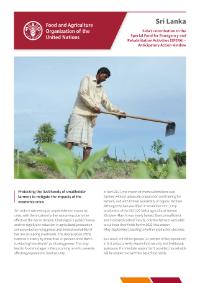Publications

Somalia: DIEM – Data in Emergencies Monitoring brief, round 4
08/2022
This Data in Emergencies Monitoring (DIEM-Monitoring) brief shares the results of a fourth-round field assessment conducted between April and May 2022 in Somalia.

Mali: DIEM – Data in Emergencies Monitoring brief, round 3
08/2022
This Data in Emergencies Monitoring (DIEM-Monitoring) brief shares the results of a third-round field assessment conducted between February and March 2022 in Mali.

Operationalizing pathways to sustaining peace in the context of Agenda 2030
08/2022
The number of people worldwide who live in settings where conflict and violence are a daily occurrence is increasing.

République démocratique du Congo: DIEM – données en situations d’urgence, bulletin cycle 3
07/2022
Ce bulletin sur le suivi des données dans les situations d'urgence (DIEM-suivi) présente les résultats de la troisième évaluation sur le terrain réalisée entre avril et mai 2022 en République démocratique du Congo.

Ukraine: Humanitarian response update, 21 July 2022
07/2022
This document provides an up-to-date summary of the humanitarian situation in Ukraine and the response of the Food and Agriculture Organization of the United Nations (FAO) on the ground.

Sri Lanka: Urgent call for assistance
07/2022
Sri Lanka is witnessing an unprecedented financial and economic crisis, and the situation is exacerbated by political and social turmoil.

FAO and Belgium provide emergency agricultural assistance to conflict-affected communities in Kayin and Kayah states
07/2022
Through the Special Fund for Emergency and Rehabilitation Activities (SFERA), the Government of the Kingdom of Belgium contributed USD 500 000 to FAO to mitigate the impact of the ongoing crisis in Myanmar on the most vulnerable households.

Special Fund for Emergency and Rehabilitation Activities (SFERA) – Annual report 2021
07/2022
This annual report provides a brief description of the major operations initiated with the Special Fund for Emergency and Rehabilitation Activities (SFERA) for the 12-month period ending 31 December 2021. The report contains financial data for this period, as well as data since the Fund became operational.

Colombia: 2022 Humanitarian Response Plan (HRP)
07/2022
Vulnerable households in Colombia remain affected by extreme weather events, armed violence, and the significant influx of refugees and migrants from the Bolivarian Republic of Venezuela.

Lebanon: DIEM – Data in Emergencies Monitoring brief, round 2
07/2022
This Data in Emergencies Monitoring (DIEM-Monitoring) brief shares the results of a second-round field assessment conducted between March and April 2022 in Lebanon.

Pakistan: DIEM – Data in Emergencies Monitoring brief, round 3
07/2022
This Data in Emergencies Monitoring (DIEM-Monitoring) brief shares the results of a third-round field assessment conducted between March and April 2022 in Pakistan.

Sri Lanka: Sida’s contribution to the Special Fund for Emergency and Rehabilitation Activities (SFERA) – Anticipatory Action window
07/2022
Sri Lanka is witnessing an unprecedented economic crisis. Challenges in public finance and the significant reduction in agricultural production compounded by rising prices and limited availability of fuel are disrupting livelihoods.
.jpg?sfvrsn=9e66adbe_11)
Managing animal health emergencies with a One Health approach
06/2022
The concept of One Health is woven into the fabric of the Food and Agriculture Organization of the United Nations (FAO) Emergency Management Centre for Animal Health (EMC-AH).

Drought in the Horn of Africa: Revised rapid response and mitigation plan to avert a humanitarian catastrophe (January–December 2022)
06/2022
The Horn of Africa is facing the third severe La Niña‑induced drought episode in a decade, and the region is on the verge of a catastrophe if humanitarian assistance is not urgently scaled up and sustained.

Palestine: Humanitarian Response Plan 2022
06/2022
In 2021, about two out of five people were food insecure in Palestine.

The Niger: Response overview (June 2022)
06/2022
For over a decade, the Niger has experienced a food security crisis with agricultural and pastoral production deficits.

South Sudan: Humanitarian Response Plan 2022
06/2022
South Sudan is facing one of the worst food security and nutrition crises globally. Almost 63 percent of the population is likely to be in acute food insecurity, of whom 87 000 people facing extreme hunger with no or limited coping mechanisms.

Ukraine: Humanitarian response update, 13 June 2022
06/2022
FAO's revised Rapid Response Plan was issued on 19 April, seeking USD 115.4 million to assist 979 320 people in rural areas through December.

Hunger Hotspots: FAO-WFP early warnings on acute food insecurity: June to September 2022 Outlook
06/2022
The Food and Agriculture Organization of the United Nations (FAO) and the World Food Programme (WFP) warn that acute food insecurity is likely to deteriorate further in 20 countries or situations (including two regional clusters) – called hunger hotspots – during the outlook period from June to September 2022.

Cameroon: Humanitarian Response Plan 2022
06/2022
In Cameroon, the prolonged armed conflict, the influx of refugees from neighbouring countries as well as the impact of climate change, with limited rains and long dry spells, are exacerbating the vulnerability of millions of Cameroonians.
